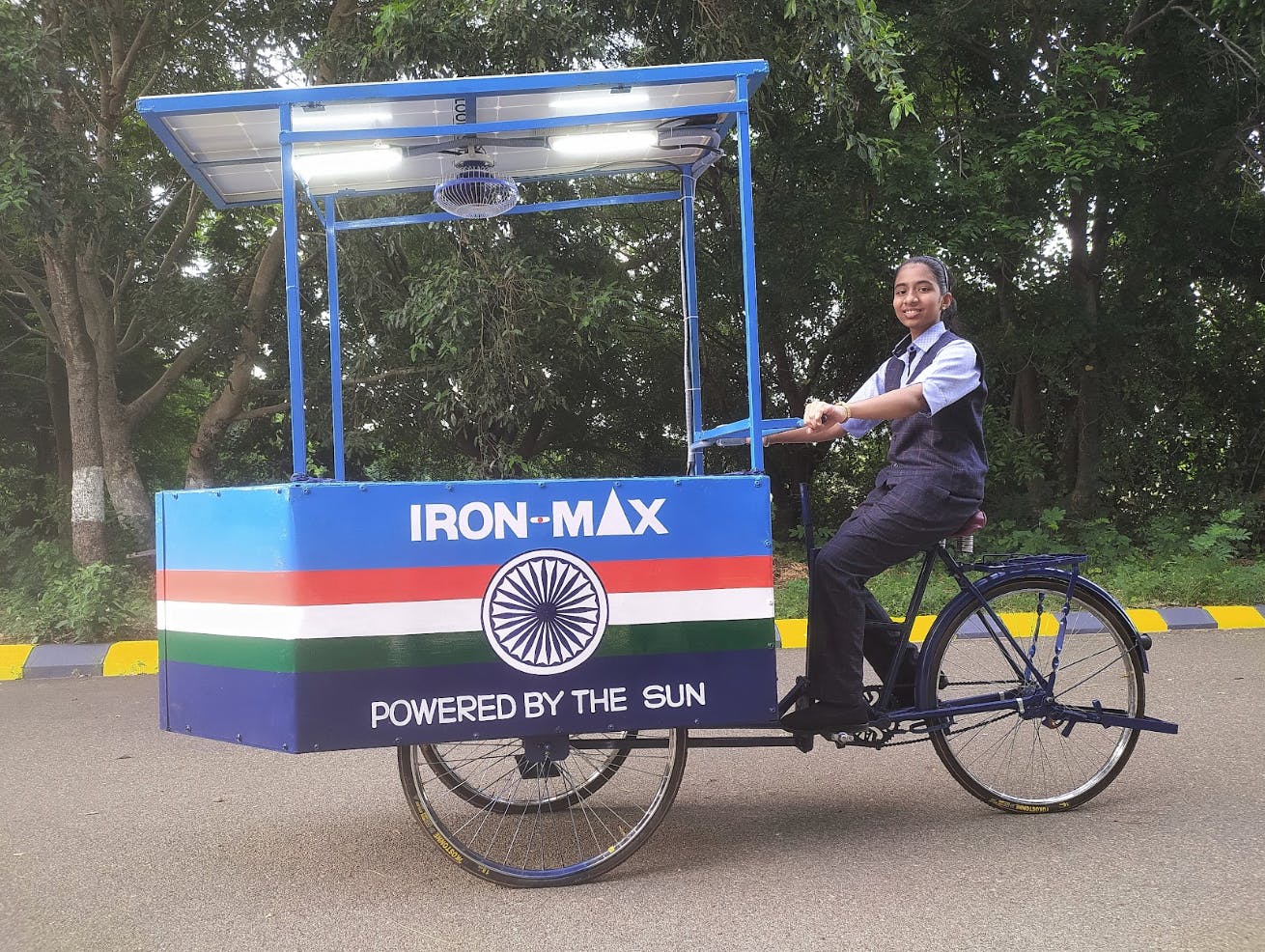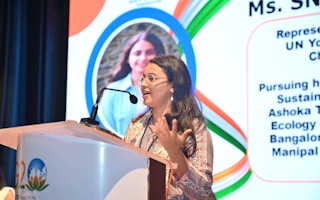Sneha Shahi was once an angsty teenager, but her decision to pivot from activism to academia has helped her deal with her anxiety.
To continue reading, subscribe to Eco‑Business.
There's something for everyone. We offer a range of subscription plans.
- Access our stories and receive our Insights Weekly newsletter with the free EB Member plan.
- Unlock unlimited access to our content and archive with EB Circle.
- Publish your content with EB Premium.
The 25-year-old channelled her frustration with the travails of activism in a country with dwindling democratic freedoms into scientific rigour in the academic world. Pursuing a doctoral degree in environmental research in India is now a safer bet, she says.
Shahi is among the new generation of young Indians in the climate activism ecosystem who are determined to bring about change, but are pragmatic about how best to achieve it in difficult circumstances.
India’s Foreign Contribution (Regulation) Act (FCRA), which gives the government sweeping powers to clamp down on non-government organisations, has made activism a risky business in the world’s largest democracy. India is the Asia’s most dangerous country for human rights and environment defenders, a study revealed in May, and the licences of countless NGOs have been revoked under the FCRA in recent years.
But despite the odds, youth climate campaign groups continue to pop up across the country. Most of India’s climate youth groups are unorganised, decentralised and collaborate through informal networks. As such, they lack the safety net provided by traditional non-government organisations, such as legal backing or funding.
Growing up amidst the pristine natural landscape of India’s northeastern region shaped Shahi’s perspective on environmental issues. She is one of India’s 17 United Nations Young Climate Champions recognised for their work supporting environmental causes, with a focus on cleaning up polluted water bodies. Along with her friends, she cleaned up over 700 kilograms of plastic debris from an urban stream before pivoting to academia.
“I used to be extremely angry and persistent about the fact that we were not doing enough for the deteriorating environment. But it wasn’t leading anywhere. I had this whole journey in conservation where I was an angry teenager,” said Shahi, adding that she feels more secure in her new chosen field.
The Greta Thunberg influence
Environmental awareness has grown steadily among Indian youths over the past decade, as chronic droughts and extreme heatwaves have shunted climate change into the consciousness of young people, and prompted many to take action, inspired by the rise to fame of Swedish environmental activist Greta Thunberg in 2018.
Thunberg’s Fridays For Future (FFF), a youth-led climate movement, galvanised thousands of children and young people to rally against the India’s acute air pollution problem and environmentally-damaging development projects.
The movement was set back in 2021 when a vocal environmental campaigner, 22 year-old Disha Ravi, was arrested under a colonial-era sedition law, which carries a maximum penalty of life imprisonment. Ravi was charged for creating and sharing an online document that supported a farmers’ protest, which had also been shared by Thunberg in social media.
Ravi’s arrest was seen as part of a heavy-handed crackdown by Prime Minister Narendra Modi’s government and sent shockwaves through the environmental movement.
The threat of detainment looms over the decisions young climate activists now make in India. For many young men and women, this is their first foray into activism and they often feel that their generation bears the brunt of a climate breakdown caused by developed countries and previous generations.
“I do fear for my own safety, but more importantly, for the safety of my family. It is a concern that definitely affects the way I think about which areas I can work in, which areas are safe, and which areas pose less risk,” said Akhilesh Anilkumar, another UN India Youth Climate Leader who runs the Bring Back Green Foundation, a climate education non-profit.
“The constant analysis of safety risks is something we have to keep in mind, but we still strive for justice and climate action,” he added.
Some youth-led groups have achieved success at the local level. For instance, FFF campaigners fought against the construction of a mall in Shillong in the country’s northeast, the Save Mollem campaign battled infrastructure development projects in the eco-sensitive Western Ghats in Goa, and a group of volunteers, mostly children, cleaned up the River Tawi in Jammu in northern India with little to no support from the government.

Vinisha Umashankar, a 12th grade student based in Tamil Nadu, is known for her innovative solar-powered ironing cart she developed to replace polluting charcoal-fueled irons. Hostility towards climate activists has increased in India, she says. Image: Vinisha Umashankar
A contentious path
India’s policymakers are faced with a difficult balancing act, with the need to strengthen infrastructure, boost industry, and ensure food security for its citizenry, while also weighing the long-term environmental costs of such developmental progress.
The government appears publically enthusiastic about advancing the green agenda , including its push for renewable energy and forest conservation. However, the Modi administration’s handling of many other environmental issues, such as the Draft Environmental Impact Assessment (EIA) Notification of 2020, a legal instrument that allows industrial expansion without prior public scrutiny of the environmental consequences, has sparked serious pushback.
The EIA 2020 draft faced opposition from over 100 environmental groups and activists, receiving more than two million objections and suggestions.
These issues have mobilised many young Indians to take to the streets to protest against the Modi regime.
“The world demands action. Protesting is a democratic choice,” said Vinisha Umashankar, a 12th grade student based in Tamil Nadu, known for her innovative solar-powered ironing cart she developed to replace polluting charcoal-fueled irons.
Umashankar also highlighted that policymakers find different ways to stifle activists, and this holds true at all levels of government, not just at the federal level.
“Hostility towards climate activists and environmentalists and the hoops we have to jump through to get things done have increased,” she said.
“A tree plantation drive has taught me several things. Identifying suitable places, informing people about the plantation, collecting saplings from the nursery, gathering volunteers, coordinating with local government agencies, and ensuring the protection and regular watering of seedlings require time, effort, and money,” she said.
The amount of paperwork that must be submitted for tree plantations in public places has significantly increased, she noted.
In addition to diminishing democratic freedoms, several other factors trouble young climate campaigners, including a lack of resources and environmental awareness.
“One of our primary challenges is gaining the attention and support of stakeholders who have the power to drive significant change,” she said.
“As a young person, it can be particularly difficult to be taken seriously and have a voice in decision-making processes. Breaking through the barriers and capturing the attention of policymakers, businesses, and other influential individuals can be an uphill battle,” noted Anilkumar, who had to switch between three different universities and faced financial setbacks as he struggled to carry out his work.
But despite the obstacles, young Indian activists soldier on to safeguard their future in one of the world’s most vulnerable countries to climate change.










